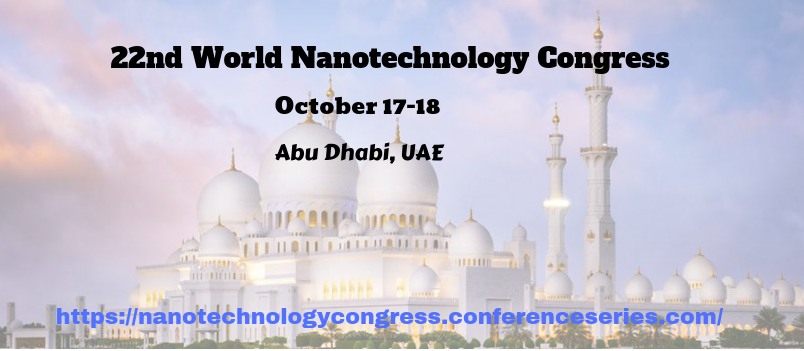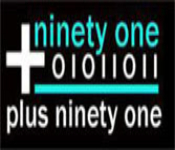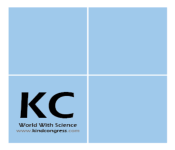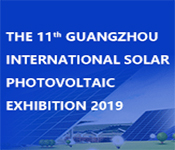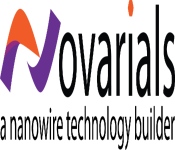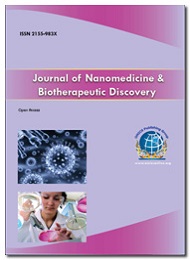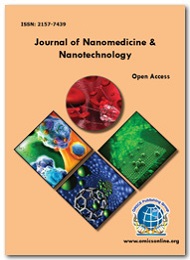Theme: Revolutionary Expansion in the world of Nanotechnology
Nanotechnology Congress 2019
About Conference:
We invite all the experts and researchers from the Nanotechnology sector all over the world to attend “22nd World Nanotechnology Congress“ (Nanotechnology Congress 2019) which is going to be held on October 17-18, 2019 in Abu Dhabi, UAE. Nanotechnology Congress 2019 conference includes Keynote presentations, Oral talks, Poster Presentations, Workshops, and Exhibitors.
Nanotechnologies are forthcoming use in healthcare, electronics, cosmetics, and other areas. Nanomaterials are the elements with the finest measurement of a size range of 1 to 100 nanometer. The theme of the conference is about “Revolutionary Expansion in the world of Nanotechnology”. International symposiums, Panel Discussion, and B2B meetings, International workshops are conducted based on specific topics related to Nanotechnology.
The most other engineering majors work with Nanotechnology, but the heart of nanotechnology is Materials Science across all the disciples. Nanotechnology Congress 2019 conference is also comprised of Best Post Awards, Best Oral Presentation Awards, Young Researchers Forums (YRF) and also Video Presentation by experts. We are glad to welcome you all to join and register for the “22nd World Nanotechnology Congress” which is going to be held during October 17-18, 2019 in Abu Dhabi, UAE.
Why attend?
Nanotechnology Congress 2019 offers a great opportunity to make new contacts in the field of Nanotechnology which involves the designs and discoveries of new materials. The enlightenment originated when researchers began to use analytical thinking from Physics, Chemistry, Engineering, and medicine.
The conference will provide a platform to share new innovating ideas which is related to recent developments in Nanotechnology. Nanotechnology Scientists and researchers will know about more information regarding their research subjects and will be able to establish their views at a global level.
Targeted Audience:
- Nanotechnologists
- Pharmacists
- Nano-Scientists
- Pharmaceutical Companies and Markets
- Academicians
- Nanotechnology Students, Scientists
- Nanotechnology Researchers
- Nanotechnology Faculty
- Nanotechnology Associations and Societies
- Business Entrepreneurs
- Training Institutes
- Manufacturing Medical Devices Companies
- Nanotechnology Engineers
- Industrial Professionals
Track 1: Nanotechnology
Nanotechnology is the manipulation of matter on an atomic, molecular, and supramolecular scale and engineering of functional systems at the molecular scale. It has at least one dimension sized from 1 to 100 nanometers. Size is naturally broad, including the fields of science as diverse as molecular biology, superconductors, semiconductor physics, and microfabrication. Nanotechnology is the engineering which functions at the molecular scale. Materials reduced the nanoscale to show the different properties to exhibit macroscale to enable unique applications.
- Scope and Application of Nanotechnology
- Nanoparticle
- Molecular Nanotechnology
- Nanoelectronic
Track 2: Nanotechnology in water treatment
Providing clean and cheap drink is one amongst the modern-times challenges. The world’s growing population causes water scarceness, and pollutants contaminate no matter water sources square measure left. Nanoengineering has provided innovative solutions for water purification. Nanotechnology-enabled water-treatment processes, showing however they rework our water system and waste treatment. The applications of nanotechnology are used for completely different nanomaterial, properties, mechanisms, limitations, and toxicities of nanomaterials.
- Detection of Microbial Pathogens in water
- The Potential of Nanofibers and Nanobiocides in Water Purification
- Nanozymes for Biofilm Removal
- Reverse Osmosis
- Electrospinning Nanofibers
Track 3: Material Processing and Manufacturing
Materials processing and Manufacturing focuses on developing material science and materials which process primarily for engineering and technology. Materials scientists are proficient at emerging cost-effective methods to amalgamate process and fabricate radical materials which can meet the hassles of quickly varying commercial marketplace. Scientists from Ohio State’s Department of Materials Science and Engineering are dedicated to this assignment through a wide range of programs. Some of them are Semiconductor process modeling, Phase transformation, Fabrication and testing of advanced micro-composite materials, High-temperature intermetallic materials, modeling of the chemical vapor deposition process.
- Nanostructural evolution in Material Processing
- Micro-electro-mechanical systems(MEMS)
- Mechanical properties based on Nanostructures
- Laser-based Nanomanufacturing
Track 4: Material science
Materials science and Nanoengineering is a discipline which deals with the discovery and design of new substances. A nanomaterial plays a major role in Material science. Carbon nanotubes are used by scientists in Worldwide. The unique properties are a strength, physical properties, and small proportions. Different sizes of isomers are done in computational strategies. New thoughts and collective research are carried out in Nanophotonics. The perspectives of Material sciences which cover regions like metal, glasses, polymers, electrical materials, biomedical materials. Propelled Materials has numerous mechanical advancements to develop new lives. A portion of the applications is optical strands, laser fiber sensors for the astute condition, electronic materials for correspondence and data innovation, vitality materials for sustainable power source and condition, light composites for better transportation.
- Electron backscatter diffraction in Materials Science
- New Frontiers in Materials Science by Ionic liquids
- Reticular synthesis and the design of new materials in Nanotechnology
- Constitutive Equations for Elastic-Visco plastic Strain-Hardening Materials
- Crystal Engineering of nonlinear optical materials
Track 5: Graphene
A graphene is an allotrope form of carbon which comprises a layer of carbon atoms set in a hexagonal lattice. Graphene is the simplest structural element of several different allotropes of carbon, such as graphite, carbon nanotubes, charcoal, and fullerenes. Graphene and its band structure & Dirac cones, influence a grid on doping. Graphene is a versatile platform for Nanotheranostics and tissue engineering which can be deliberated as an indeterminately huge aromatic molecule. Graphene is the toughest material is verified which only conducts heat and electricity proficiently and are transparent. Graphene demonstrates a large and nonlinear diamagnetism, which is more than that of graphite and can be ascended by neodymium magnets. Spintronics also plays a major part in innovative technologies that have advent quantum behavior for computing.
- Carbon Nanochips and nanostructures
- Advances in Graphene physics
- Graphene Nano in energy and storage
- Graphene and Biomaterials for health care
Track 6: Computational Material Science
Computational Material Sciences aims to inflate the communication between tentative materials investigation and computational effort on both surviving and fresh progressive materials. It circulates articles of interest to physicists, chemists and materials researchers and engineers and to other scientists tangled by means of computational modeling and materials phenomena. Computational methods already play a major role in several materials analyses and will individually become more persistent as computer control progresses in the decades ahead. The development and application of methods are engaged with the atomic and electronic structure of materials. Computational Materials Science also holds novel enlargements in statistics and machine knowledge to understand composite simulations and accelerate the scheme of materials. Current presentations are including materials for electronic applications, nano-electromechanics, and energy. Computational sciences include computational equipment for reconcile materials.
- Materials with Controlled Nanostructural architecture
- Computational studies of Nanoscale materials
- Nano biomaterials & Nanomechanics
- Methods for the development of Computational Materials
Track 7: Nanotechnology in Space
In future space missions, Nanotechnology will play a major role. Nanosensors, intensely upgraded great performance materials or extremely proficient propulsions systems, examples are a space elevator, protecting satellites from energy weapons, propulsion systems, radiating shielding, anti-satellite weapon countermeasure, space instrumentation. The higher choice for elevator’s cable are carbon nanotubes, consequently, nanotechnology which is capable to produce carbon-based material that is light in weight yet tough sufficient to resist the forces it would face in space. A progression in nanomaterials makes the lightweight solar sails and a cable for the space elevator probable. By significantly dropping the quantity of rocket fuel required, these advances could inferior the cost of reaching orbit and drift in space. Furthermore, new materials joined with nanosensors and nanorobots for improving the enactment of spaceships, spacesuits and the equipment used to discover planets and moons, making nanotechnology an imperative part of the ‘final frontier’.
- Nanosensors and Nanospace suits
- NASA center for space Nanotechnology
- Nanorobots and lightweight spacecraft
- Carbon Nanotubes & Nano Lubricants
Track 8: Pharmaceutical Nanotechnology
Pharmaceutical Nanotechnology compress with developing forthcoming technologies for improving personalized resolutions for drug delivery systems. Pharmaceutical Nanotechnology encompasses applications of nanoscience to the pharmacy as nanomaterials and as campaigns like imaging, diagnostic, drug delivery, and biosensors. The drug delivery system influences the rate of absorption, metabolism, and distribution, excretion of the drug or other related chemical substances in the body. In accumulation to this the drug delivery system also allows the drug to bind to the target receptor. Pharmaceutical sciences are using nanoparticles to reduce toxicity and side effects of drugs and risks to the patient. Pharmaceuticals have been associated with different types of dendrimers which are large complex molecules to fight against cancer. Drug delivery and related pharmaceutical enlarged in the context of nanomedicine which comprises the least two components, one of which is a pharmaceutically active ingredient.
- Nanomedicine and Nanobiotechnology
- The scope of Nano-based drug delivery system
- Applications of nanoscience to the pharmacy as Nanomaterials
- More specific drug targeting and delivery in Nanotechnology
- Biopharmaceutics and Liposomes
- Faster development of new safe medicines in Pharmaceutical Nanotechnology
Track 9: Quantum dots
Quantum dots are minor particles or nanocrystals which has the semiconducting substances with a diameter ranging from 2-10 nanometers. The foremost mechanisms of interaction between quantum dots (QDs) are of various types which are of organic molecules within the framework of the use of photo-physical properties of colloidal semiconductor nanoparticles for recognizing organic and biochemical compounds. The result of this is fluorescence, in which the nanocrystals can produce a variety of colors determined by the size of the particles. The distinct, quantized energy levels of quantum dots connect them meticulously to particles than bulk materials and resulted in quantum dots being named 'artificial atoms'. Furthermore, because of the high level of control probable over the size of the nanocrystals formed, quantum dots can be altered during manufacturing to emit any color of light.
- Quantum dot photodetectors
- Quantum dots in development of Nanomedicine
- Light-Emitting Quantum Dots with Tunable and Equalized Fluorescence Brightness
- Chemical bath deposition of CdS quantum dots onto mesoscopic TiO2 films
- Quantum dots in Graphene
Track 10: Nanotechnology and Environment
The environmental impact of nanotechnology is the possible ways to use the nanotechnological Products and devices on the environment and can be categorized into two aspects: the potential for nanotechnological innovations to help and improve the environment and the possibly novel type of pollution that nanotechnological materials might cause if released into the environment. Nanotoxicology is the field which studies about potential health risks of nanomaterials. The extremely small size of nanomaterials is taken up by the human body than larger sized particles. On the other hand Nanotechnological products, processes and applications are contributing significantly to environmental and climate protection. Green nanotechnology use green chemistry and green engineering to make nanomaterials and Nano products.
- Green nanotechnology
- Nanopollution
- Nanotoxicity in cells
- Bioaccumulation, the biodegradability of nanomaterials
Track 11: Nanomaterials
Nanomaterial size is around 1-100 nm. It has few properties which are identified size, shape, surface properties and science. The applications are used in the fields: healthcare to electronics, optoelectronics, renewable energy technology, environmental restorations and remediations. It has a huge amount of physically and artificially heterogeneous and ultra-fine particles. Some specific properties are related to shape, measure, surface properties, and science. These are reflected concentrates, colloids or powders. It is emerging in the branch of medicine, electronics, and agriculture.
- Nanoporous material
- Microfabrication
- Nanofibers
- Food nanotechnology
Track 12: Biosensors
The word “biosensor" is also called a "natural sensor." A biosensor is a gadget which changes over an organic reaction into an electrical flag. The investigative gadget is comprised of a transducer and an organic component that might be a chemical, or an immune response or a nucleic corrosive. The biocomponent collaborates with the analyte and the natural reaction is changed into an electrical flag by the transducer. Electrochemical biosensors are typically in view of enzymatic catalysis of a response which produces or expends electrons. Amperometric biosensors are independent coordinated gadgets in view of the estimation of the current because of the oxidation.
- Nano-materials based biosensors
- Clinical applications
- Transducers in biosensors
- Photonic sensor technologies
Track 13: Nanotoxicology
Nanotoxicology is a study of the nature and mechanism of toxic effects of nanoparticles on living organisms and other biological systems. It also deals with the quantitative assessment of the severity and occurrence of genotoxic effects relative to the exposure of the organisms. Human exposure routes are mainly mediated through inhalation, dermal, oral intake or by injection. The small particle size and the shape of nanomaterial allows to uptake into blood and lymph circulation and circulation to tissues in the body that normally are protected by barriers, such as the brain by penetration of the blood-brain-barrier (BBB)
• Lipid Nanotechnology
• Biomolecular Engineering
• Cardiac therapy
• Biological membranes
Track 14: Nanotechnology in Tissue Engineering
Tissue engineering is defined as to repair, replace cells. Nanofabrication techniques used in tissue engineering which evolves fabrication of biometric scaffold and also to improve the extracellular microenvironment, more accuracy on positioning and viability, complexity, the interaction of cells, tissues/organs. Tissue engineering is used easily by nanotechnology and nanophase. Stem cells, neural cells, cartilage cells, bone cells, vascular cells, and hepatic cells are used through micro and Nanotechnology.
- Carbon Nanotubes
- Cardiac tissue engineering
- Neural tissue engineering
- Bone tissue engineering
- Drug Delivery
Track 15: Polymer Nanotechnology
The field of Nanotechnology is used in current research and development in all technical disciplines. This obviously includes Polymer Nanotechnology which includes microelectronics. Other areas which include polymer-based biomaterials, Nanomedicine, Nanoemulsion particles; fuel cell electrode polymer bound catalysts, layer-by-layer self-assembled polymer films, electrospun nanofabrication, imprint lithography, polymer blends, and Nanocomposites. Phase separated polymer blends often used to achieve Nanoscale phase dimensions; block copolymer domain morphology is usually at the Nanoscale level; asymmetric membranes often have Nanoscale void structure, mini-emulsion particles. In the large field of Nanotechnology, polymer matrix based Nanocomposites have a prominent area of current research and development. Researchers are mainly focussed in polymers and nanotechnology by making efforts to design materials at a molecular level. With this broad focus, research always ranges from fundamental scientific investigations of the interactions, properties, and assembly of such molecular constituents.
- Polymer nanocomposites matrices
- Polycondensation polymerization
- Block copolymer nanocomposites
- Bio-hybrid polymer nanofiber
Scope and importance
Nanotechnology has the potential to emerge to be more important revolutionary strength for business than the industrial revolution or the information technology revolution. In fact, many beliefs are combined to impact both the industrial and information revolution approache0073 the magnitude of change that could result from the commercialization of Nanotechnology. Nanotechnology has a high integrative field. While comparing about the scope of nanotechnology, India is still in the starting stage, whereas in terms of R&D, Abroad Nations like US, UK, China are discharge well. It has a remarkable development usage of nanotechnology in various fields like cosmetics, food and textiles. The organizing committee has started the instructive and knowledgeable conference program which includes entire lectures, symposium and workshops on Nanotechnology and a diversity of topics, poster presentations, and various programs for participants from all around the Globe. We solicit you to join us at the Nanotechnology congress 2019, where you will be sure have a valuable experience with scholars from all around the world.
Conference Highlights
- Nanotechnology
- Nanotechnology in water treatment
- Material Processing and Manufacturing
- Material science
- Graphene
- Computational Material Science
- Pharmaceutical Nanotechnology
- Quantum dots
- Nanotechnology and Environment
- Nanomaterials
- Biosensors
- Nanotoxicology
- Nanotechnology in Tissue Engineering
- Polymer Nanotechnology
Why Abu Dhabi?
Nanotechnology Congress 2019 is going to be held in Abu Dhabi. Abu Dhabi is forenamed to be the finest created place for the field of Nanotechnology. Abu Dhabi is the biggest and second most popular city in the United Arab Emirates, UAE and 30th largest globally with the 18th lofty GDP per capita (USD 44,200) rate. Abu Dhabi lies on a T-shaped island forecast into the Persian Gulf from the central western coast. It standout amongst the seven Emirates. Abu Dhabi blends both buildings and scenery. Abu Dhabi is on top and also Abu Dhabi has good weather, beautiful Islands which are worth seeing. Abu Dhabi rose as a worldwide city and also has more business centre of the Middle East. The Emirate's Western-style model of business drives its wealth for the primary incomes presently greeting from tourism, aviation, genuine estate, also money related administrations. Abu Dhabi International Airport (AUH) is the foremost flying hub of the city and the second fullest airport in the UAE. The number of passengers at the Abu Dhabi International Airport expands by 17.2% in 2015, with more than 23 million passengers passing over its terminals during this year.

Nanocomposites have found niche applications such as automotive (under the hood and exterior) and beverage packaging. More companies will enter the nanomaterials market.At the same time, there will be an increasing number of business relations such as technology licensing and joint marketing to achieve faster commercialization of the new products The research and development funding for nanotechnology and nanomaterial’s will continue to increase in this decade. The global market for the nanomaterial's in the year 2006 was around the US $14,000, and the global investments are to be increased 50% more by the ending of 2019.By 2020, Abu Dhabi Health Authority aims to grow the number of medical tourists by around 12% annually and to generate Dh2.6 billion in revenue.
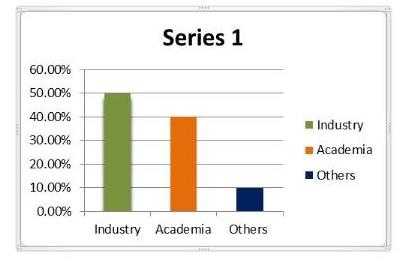
Major Nanotechnology Associations around the Globe
- New England Nanotechnology Association (NENA)
- Asian Nanoscience and Nanotechnology Association
- International Association of Nanotechnology
- American Society for Testing and Materials (ASTM International).
- Nanoscale Science Research Centers (NSRCs)
- Australian Research Council Nanotechnology Network (ARCNN)
- Global Nanotechnology Network (GNN)
- Materials Research Society
- The International Union of Materials Research societies
Nanotechnology Companies in Asia and Middle East
- ATKINS Group
- Knights Security
- Nanotech
- Shida Rubber
- CNC Machining’s
- Tiny Machining
- Precision Type
- PACIFIC COAST
- FM Global
- ISAT
- Candc Infrastructure
- Proteck Coating
- Amphenol
- Alpha Casting
- HSRE Work
- ICAM
- Curtiss-Wright
- Lake Central
- Helios Applied Systems
- Nanomaterials technology
Societies/Industries/Universities Associated with Nanotechnology
- Society of Materials Science
- Federation of Materials Societies
- Materials Research Society
- Society for Biomaterials
- Society for Materials Science
- Australasian Society for Biomaterials and Tissue Engineering
- Canadian Biomaterials Society
- Society of Nanotechnology
Nanotechnology Congress 2018 Report
We gratefully thank all our wonderful Speakers, Conference Attendees, Students, Media Partners, Associations and Sponsors for making Nanotechnology Congress 2018 Conference the best ever!
The 21st World Nanotechnology Congress, hosted by the Conferenceseries LLC ltd was held during October 15-17, 2018 at Dubai, UAE based on the theme “Exploring New Advancement in Nanotechnology". Benevolent response and active participation was received from the Organizing Committee Members along with Scientists, Researchers, Students and leaders from various fields of, Nanotechnology, pharmacy, Nano medicine who made this event a grand success.
Conferenceseries LLC ltd expresses its gratitude to the conference Moderator Junyuan Xu, Mohamad Miqdady, Niharika Kaushal namely for taking up the responsibility to coordinate during the sessions. We are indebted to your support.
Similarly we also extend our appreciation towards our Poster judges namely, Dr. Yahia Fayiz Makableh Very special Thanks to our Sponsors to have bestowed and their faith and invested in us to make this event a fruitful one. We hope you continue your support in our future endeavours.
The conference was initiated with the Honourable presence of the Keynote forum. The list includes:
- Omar Chaalal,Abu Dhabi University, UAE
- Richard E Palmer, Swansea University, UK
- Chithirai Pon Selvan, Curtin University, UAE
The meeting reflected various sessions, in which discussions were held on the following major scientific tracks:
- Nanotechnology
- Nanoscience and Technology
- Molecular Nanotechnology
- Nano Particles
- Advanced Nanomaterials
- Nanotechnology in Tissue Engineering
- Nanomedicine in Drug Delivery
- NanoPharmaceuticals
- Nanotechnology in Healthcare
- Biomaterials and Medical Devices
- Computational Nanotechnology
- Recent Advances in Nanotechnology
- Nanotechnology and Environment
- Nanobiotechnology and Nanotoxicology
- Materials Science
Conference Series LLC ltd offers its heartfelt appreciation to organizations such as Media partners- Immunify.me,energy global news, Crowd reviews, Kind Congress, Expo-book.com, Biobased press, Life science World, Pink Medico, The Pharma Times, Technology works, Tabbeby, Times International Magazines, Mind Commerce, Tendersotime, Manuscript, Meducal events Guide, Innovation Leadership Forum, Medgadget, Asian Manufactures, Clocate, Copy Book, B&M publications, Course for Doctors, Academic Resource Index, International Fair, Medgate Today, Pharma China, EVENTS GET and Collaborators like London academy of sports and Health sciences, Nanochemazone, NWN, Novarials, Nanocon 2018, Europenan Nanoscience and Nanotechnology association, Nano 2018 IL, Asian journal of Nanoscience and Materials, Nanoresearch Elements and other eminent personalities who supported the conference by promoting in various modes online and offline which helped the conference reach every nook and corner of the globe. Conference Series LLC ltd also took privilege to felicitate the Keynote Speakers, Organizing Committee Members, Chairs and sponsors who supported this event
With the grand success of Nanotechnology Congress 2018, Conference Series LLC ltd is proud to announce the "22nd World Nanotechnology Congress" to be held during October 14-15, 2019 in Abu Dhabi, UAE.
Best Poster Awards:
- Nikolay G Prikhodko, Institute of Combustion Problems, Kazakhstan
For More details visit: https://nanotechnologycongress.conferenceseries.com/
GRAPHOSITE: Venture means to build up a proficient composite checking device
"GRAPHOSITE" is a 30-month venture which began on the first August 2018. Its primary goal is to build up a Graphene Sensor for Defect Detection and Predictive Maintenance in Composite Materials, for use as a very effective, increasingly advantageous composite checking device.
This undertaking has been bolstered by the Innovate UK and has the interest of 6 Partners: Advise-Deta, DZP Technologies, Cambridge Nanomaterials Technology, Haydale Composite Solutions, and TWI.
Exhort Deta is an as of late shaped SME that has practical experience in actualizing propelled sensors to a wide scope of material change forms, including polymer handling, composite materials fabricating, blending of synthetic compounds and fix of structures. DZP Technologies is the main engineer of claim to fame materials, details, and advancements for developing enterprises. Cambridge Nanomaterials Technology is a nanomaterials development, the board, and innovation counseling organization situated in Cambridge, England. Haydale Composite Solutions is a free innovative work organization gaining practical experience in the improvement of cutting-edge composites and nanomaterial upgraded composites and their applications. TWI is a free research and innovation association, with skill in materials joining and building forms as connected in the industry.
Nanotechnology in Sports Equipment: The distinct advantage
The level of aggressiveness in games affected by nanotechnology like some other imaginative thought in materials science. Inside the specialty of games gear, nanotechnology offers various favorable circumstances, and tremendous potential to enhance brandishing hardware making competitors more secure, agreeable and sprier than any other time in recent memory. Polished ash, tennis and badminton racquets, hockey sticks, dashing bikes, golf balls/clubs, skis, fly-angling bars, bows, and arrows bolts, and so forth are a portion of the brandishing gear, whose execution and sturdiness are being enhanced with the assistance of nanotechnology.
Nanomaterials, for example, carbon nanotubes (CNTs), silica nanoparticles (SNPs), nano-dirts fullerenes, and so on are being joined into different games hardware to enhance the execution of competitors and in additional gear. Each of these nanomaterials is in charge of an additional favorable position, for example, high quality and firmness, solidness, decreased weight, scraped area obstruction, and so forth in donning hardware.
Different organizations in the region of wearing supplies are thinking of imaginative innovations/items, which incorporate Double Core™ and BLX™ by Wilson (tennis), Air D-Fence™ and Nanolok™ by InMat (tennis), nano-CFC® by Holmenkol (skiing), N-FUSED™ by Easton (bows and arrows), NSi™ from St. Croix (fly-angling), Nanopreme™ by Yonex (golf), and so on.
Nanotechnology being a problematic innovation has affected each circle of our everyday life and game is no special case. Nano-improved wearing types of gear are significantly more execution upgrading and predominant as far as quality, solidness, and strength when contrasted with customary brandishing types of gear. Different organizations are thinking of increasingly creative plans to execute nanotechnology for enhancing sports hardware significantly further. Numerous noticeable sportspersons are picking to have nano-fused brandishing types of gear to improve their exhibitions. Be that as it may, being a costly innovation, nano-improved wearing supplies can't be managed by every single sportsperson and except if each equipped competitor is given the equivalent brandishing gear, it would be unreasonable and hard to pass judgment on the regular donning capacity and the human soul. Hence, a definitive objective to be accomplished ought to be to push the limits of execution levels instead of pushing the expense of innovative brandishing supplies. Likewise, so as to address the conceivable lethality issues identified with nano-upgraded brandishing supplies, a legitimate checking of their assembling forms, time of utilization and transfer is expected to restrict the arrival of nanoparticles because of debasement or some other reason.
Metal-organic frameworks (MOFs)
Metal-natural systems (MOFs), otherwise called permeable coordination polymers (PCPs), are a class of nanoporous materials. They are very arranged crystalline materials made out of natural ligands and inorganic metals or metal-oxo units (e. g. Cu, Cr, Zn) to create exceptionally requested, 3D structures. MOFs have incredible concoction and physical properties and can be collected from an assortment of metals and countless linkers, opening up a wide scope of uses. Various new businesses are currently conveying MOF items to the market.
RNA nanopatterning on Graphene
Graphene-based materials empower the detecting of assorted biomolecules utilizing trial approaches dependent on electrochemistry, spectroscopy, or different techniques. Albeit fundamental detecting was accomplished, it had up to this point not been conceivable to comprehend and control biomolecules' basic and morphological association on graphene surfaces (for example their stacking, collapsing/unfurling, self-get together, and nano-designing). Here we present the understanding into the auxiliary and morphological association of biomolecules on graphene in water, utilizing an RNA barrette as a model framework. We demonstrate that the key parameters overseeing the RNA's conduct on the graphene surface are the number of graphene layers, RNA fixation, and temperature. At high focuses, the RNA frames a film on the graphene surface with ensnared nanobubbles. The thickness and the measure of the air pockets rely upon the number of graphene layers. At lower focuses, unfurled RNA stacks on the graphene and structures sub-atomic groups superficially. Such power over the conformational conduct of collaborating biomolecules at graphene/water interfaces would encourage new uses of graphene subsidiaries in biotechnology and biomedicine.
Neuromorphic Computing Using Memristor Crossbar Networks: A Focus on Bio-Inspired Approaches
Neuromorphic processing frameworks, which utilize electronic circuits dependent on computerized and simple segments to mirror the neurobiological structures in sensory systems, have pulled in expansive enthusiasm as a promising methodology for future registering applications. The intrigue is driven both from the base up, where proceeded with execution increases following Moore's law have turned out to be progressively harder to acquire and starting from the top, where productive uses of information-driven undertakings, for example, computerized reasoning, huge information investigation, and expansive scale numerical reenactments request PC designs that can effectively address the von Neumann bottleneck. Neuromorphic registering enables enormous measures of information to be prepared in parallel, conceivably with insignificant information development, hence offering a promising answer for present and future processing needs.
Conference Highlights
- Nanotechnology
- Nanotechnology in water treatment
- Material Processing and Manufacturing
- Material science
- Graphene
- Computational Material Science
- Nanotechnology in Space
- Pharmaceutical Nanotechnology
- Quantum dots
- Nanotechnology and Environment
- Nanomaterials
- Biosensors
- Nanotoxicology
- Nanotechnology in Tissue Engineering
- Polymer Nanotechnology
To share your views and research, please click here to register for the Conference.
To Collaborate Scientific Professionals around the World
| Conference Date | October 17-18, 2019 | ||
| Sponsors & Exhibitors |
|
||
| Speaker Opportunity Closed | |||
| Poster Opportunity Closed | Click Here to View | ||
Useful Links
Special Issues
All accepted abstracts will be published in respective Our International Journals.
- Journal of Nanomedicine & Biotherapeutic Discovery
- Journal of Nanomedicine & Nanotechnology
- Journal of Nanosciences: Current Research
Abstracts will be provided with Digital Object Identifier by

